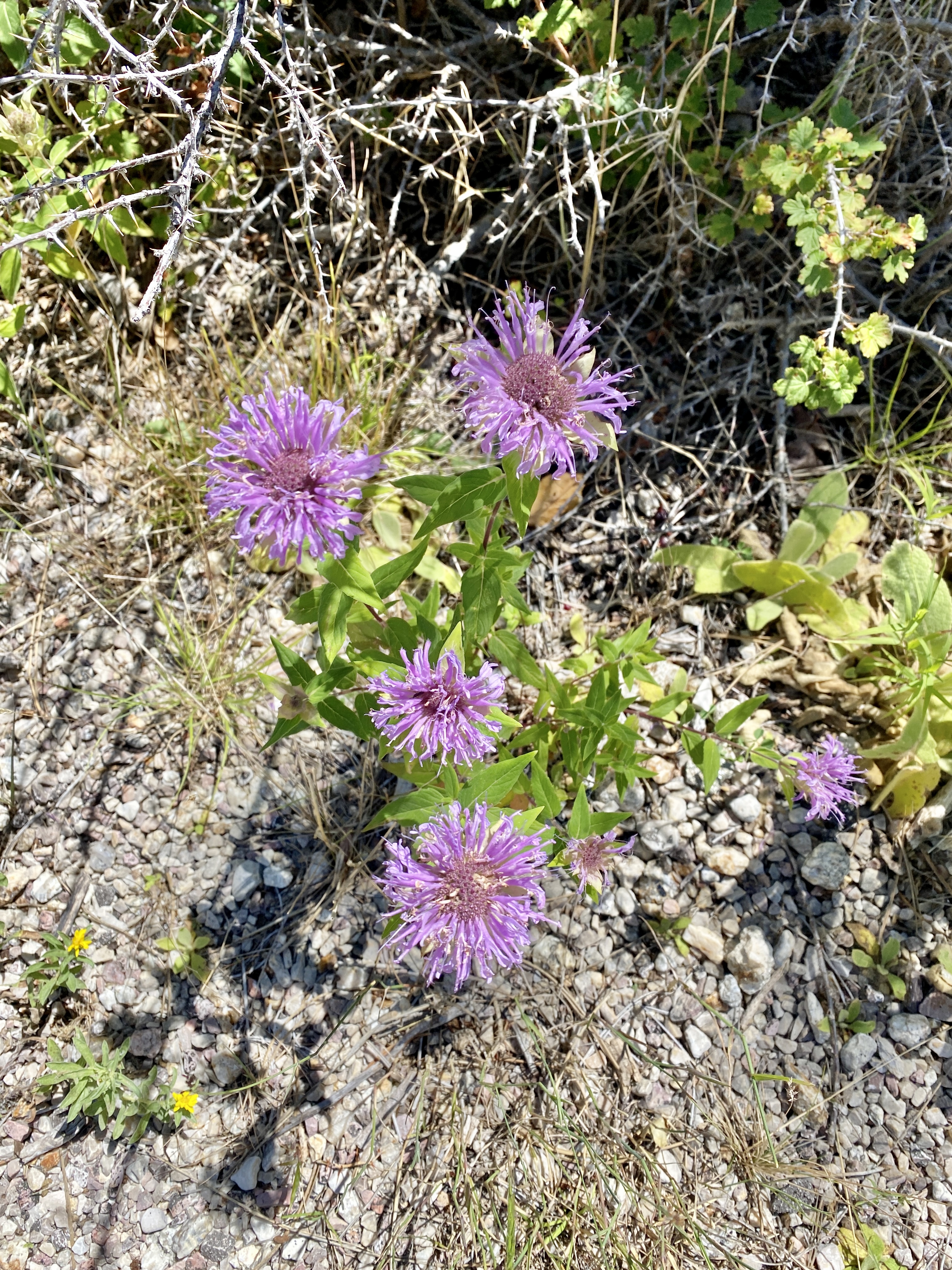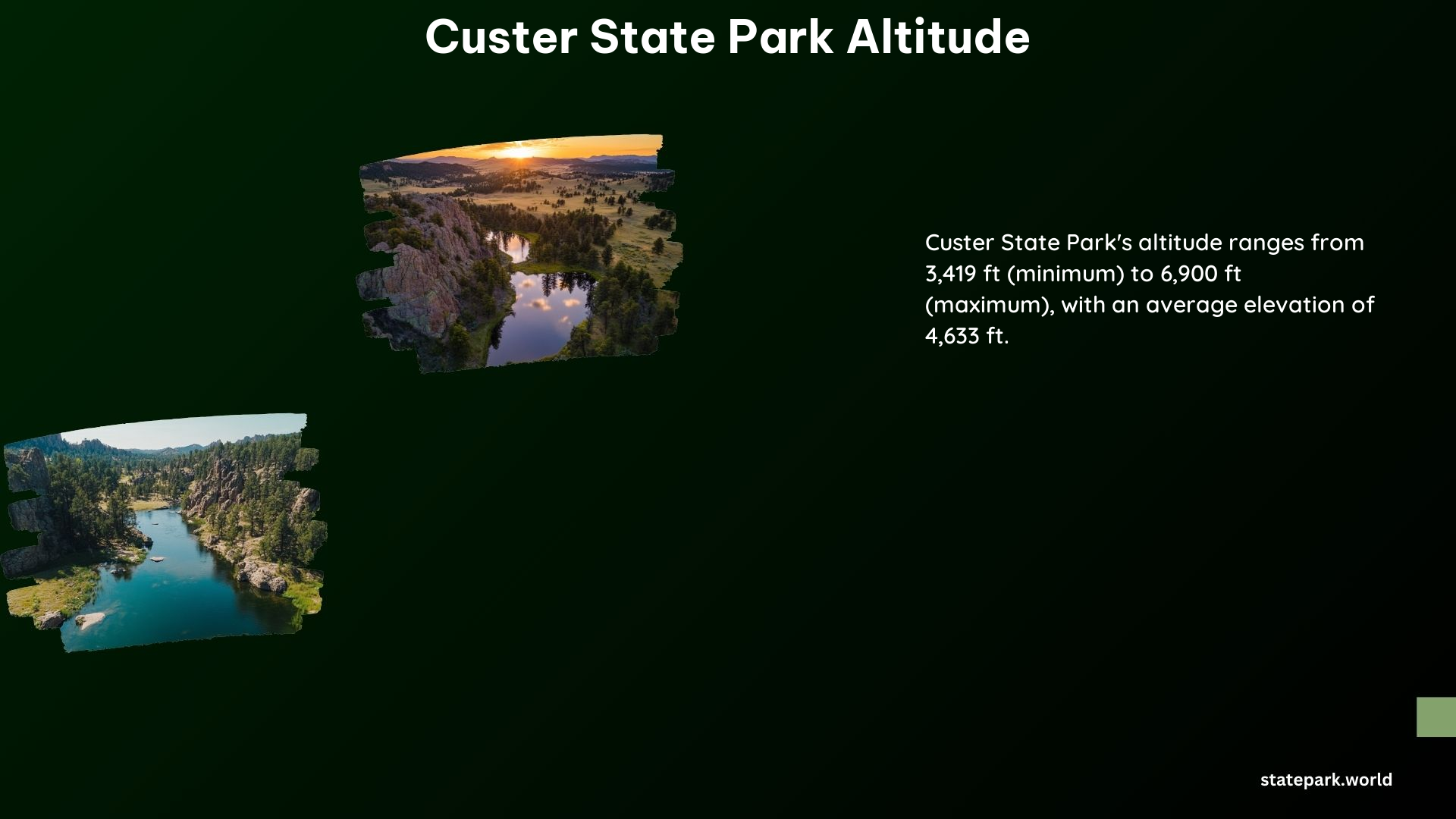Custer State Park, nestled in the heart of the Black Hills of South Dakota, is a natural wonder that captivates visitors with its stunning landscapes and diverse wildlife. One of the park’s most remarkable features is its wide range of elevations, which contribute to the unique character of this outdoor paradise. In this comprehensive guide, we’ll delve into the details of Custer State Park’s altitude, providing you with the information you need to plan your next adventure.
The Exact Custer State Park Altitude: From Peaks to Prairies

Custer State Park boasts a remarkable range of elevations, with the highest point reaching an impressive 7,242 feet (2,207 meters) above sea level at Black Elk Peak. This makes Black Elk Peak the highest point in the United States east of the Rocky Mountains. In contrast, the lowest point in the park sits at an elevation of 3,419 feet (1,041 meters), creating a diverse and dynamic landscape.
The average elevation of Custer State Park is 4,636 feet (1,413 meters) above sea level, a figure that reflects the park’s varied terrain. This range of elevations supports a diverse array of ecosystems, from the rugged granite peaks to the rolling prairies and clear mountain waters.
Exploring the Highest Point: Black Elk Peak

Black Elk Peak, formerly known as Harney Peak, is the crown jewel of Custer State Park’s impressive elevations. This majestic mountain, standing at 7,242 feet (2,207 meters), offers breathtaking views of the surrounding Black Hills and beyond. Hikers and outdoor enthusiasts flock to the park to conquer this iconic peak, which can be accessed via several challenging trails.
The hike to Black Elk Peak is a popular and rewarding experience, offering stunning vistas and a sense of accomplishment for those who reach the summit. The trail winds through dense forests, past cascading waterfalls, and across rugged terrain, providing a true test of endurance and a deep appreciation for the park’s natural beauty.
The Diverse Landscapes of Custer State Park
The varying elevations of Custer State Park contribute to the park’s diverse and captivating landscapes. From the towering granite peaks to the lush, rolling prairies, the park’s terrain is a testament to the power of nature.
Granite Peaks and Rugged Terrain
The high-altitude regions of Custer State Park are dominated by granite peaks and rugged, rocky landscapes. These areas are home to a variety of wildlife, including mountain goats, bighorn sheep, and the elusive mountain lion. Hikers and climbers are drawn to the park’s challenging trails and the opportunity to conquer the impressive summits.
Lush Prairies and Meadows
In contrast to the granite peaks, the lower-elevation regions of Custer State Park feature lush prairies and meadows. These areas are home to a diverse array of wildlife, including bison, pronghorn, and a variety of bird species. Visitors can explore the park’s scenic drives and hiking trails, taking in the breathtaking vistas and the tranquility of the rolling grasslands.
Clear Mountain Waters
Custer State Park is also home to a network of clear mountain streams and lakes, fed by the park’s high-altitude snowmelt. These waters provide a refreshing respite from the summer heat and offer opportunities for fishing, swimming, and other water-based activities.
The Impact of Elevation on Wildlife and Vegetation
The varying elevations of Custer State Park have a profound impact on the park’s wildlife and vegetation. The high-altitude regions support a unique ecosystem, with species adapted to the cooler temperatures and harsher conditions. In contrast, the lower-elevation areas are home to a more diverse array of plant and animal life, thriving in the milder climate.
High-Altitude Adaptations
The wildlife and vegetation of the high-altitude regions of Custer State Park have evolved to thrive in the challenging conditions. Mountain goats and bighorn sheep, for example, are adept at navigating the steep, rocky terrain, while the park’s coniferous forests are adapted to the cooler temperatures and higher levels of precipitation.
Lower-Elevation Diversity
The lower-elevation regions of Custer State Park support a more diverse array of plant and animal life. The lush prairies and meadows are home to a variety of grasses, wildflowers, and shrubs, providing food and shelter for a wide range of wildlife, including bison, pronghorn, and a variety of bird species.
Planning Your Custer State Park Adventure
When planning your visit to Custer State Park, it’s important to consider the impact of elevation on your experience. Whether you’re hiking to the summit of Black Elk Peak or exploring the park’s scenic drives, understanding the range of elevations can help you prepare for the challenges and opportunities that await.
Packing and Preparation
When visiting Custer State Park, be sure to pack appropriate clothing and gear for the varying elevations. Layers are essential, as temperatures can fluctuate significantly between the high-altitude regions and the lower-elevation areas. Sturdy hiking boots, sun protection, and plenty of water are also must-haves for your outdoor adventures.
Acclimating to the Altitude
If you’re visiting Custer State Park from a lower-elevation area, it’s important to allow time to acclimate to the higher altitudes. Symptoms of altitude sickness, such as headaches, nausea, and fatigue, can occur at elevations above 8,000 feet (2,438 meters). By taking it slow and allowing your body to adjust, you can ensure a safe and enjoyable experience.
Conclusion
Custer State Park’s diverse range of elevations is a testament to the natural wonders of South Dakota’s Black Hills. From the towering granite peaks to the lush, rolling prairies, the park’s varied terrain supports a rich and vibrant ecosystem, offering endless opportunities for exploration and adventure. Whether you’re a seasoned hiker, a wildlife enthusiast, or simply seeking to immerse yourself in the great outdoors, Custer State Park’s altitude is sure to leave a lasting impression.
